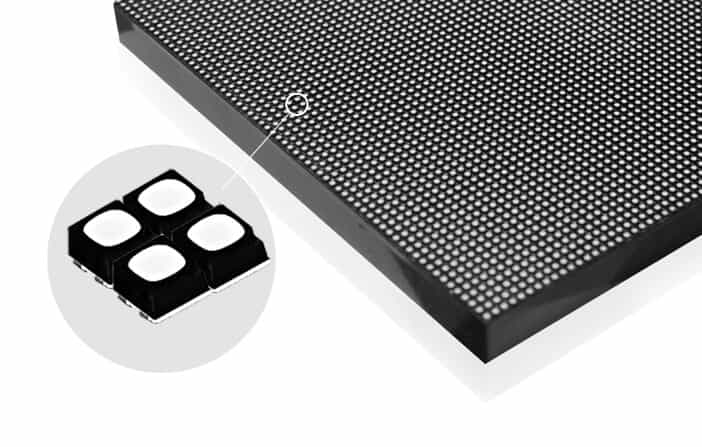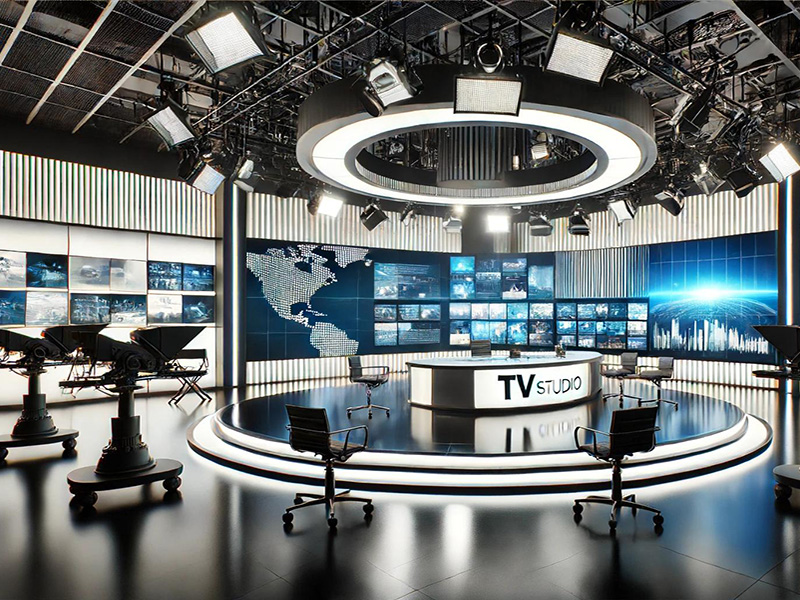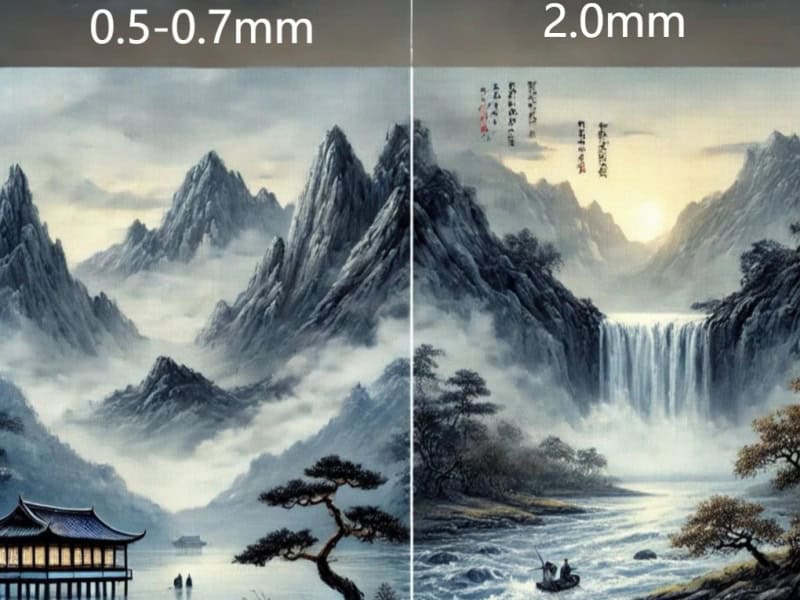Are you on the hunt for the highest resolution LED display but overwhelmed by the technical jargon? The world of LED displays is rapidly evolving, and finding the perfect display with the sharpest image quality can be a daunting task. But don’t worry—understanding one key concept, the smallest pitch available, could make your search much easier. Imagine the possibilities with cutting-edge technology that offers unprecedented clarity. Are you ready to discover what the smallest pitch for LED displays in the market is right now?
Smallest pitch for LED displays:0.5-0.7 mm
The smallest pitch for LED displays currently available is around 0.5-0.7 mm, representing the latest advancement in display technology. Traditionally, fine pitch LED displays have pitches ranging from 1.0-2.0 mm, but Mini LED technology has made pitches as small as 0.5-1.2 mm possible. While Micro LED technology may push these limits further, 0.5-0.7 mm is currently the practical market limit.
Smaller pitches result in higher resolution displays but come with increased costs and technical challenges. Despite these hurdles, demand for high-resolution displays with pitches under 2.5 mm is rapidly growing, especially for indoor applications.
Now that you know the smallest pitch available, there’s much more to explore about LED displays. What does a smaller pitch really mean for your display’s performance? How does it affect the overall cost? What industries are leveraging these advancements? By understanding these factors, you can make an informed decision about your next display investment. Let’s dive into the details with some of the most frequently asked questions:
What is the pixel pitch of an LED screen, and why does it matter?

Pixel pitch, the distance between pixels on an LED screen, greatly affects display performance. Smaller pixel pitches offer higher resolution and better image quality, making them ideal for close-up viewing. However, they are more expensive and better suited for indoor use.
- Resolution & Image Quality: Smaller pitches provide sharper images, essential for close viewing.
- Viewing Distance: Smaller pitches allow closer viewing without pixelation.
- Application Suitability:
Fine pitch (≤2mm): Best for indoor settings like boardrooms.
1.5-4.0mm: Suitable for retail and digital signage.
5-10mm: Used in stadiums and billboards.
≥10mm: Ideal for large outdoor displays.
- Cost: Smaller pitches cost more due to more LEDs.
- Indoor vs Outdoor: Indoor displays use smaller pitches; outdoor displays use larger pitches for longer viewing distances.
- Brightness & Power: Larger pitches offer higher brightness and lower power use, good for outdoor use.
Consider viewing distance, screen size, application, and budget when choosing the right pixel pitch.
Is a lower pixel pitch always better for LED displays?
A lower pixel pitch isn’t always better for LED displays; the ideal pitch depends on various factors:
Advantages of Lower Pixel Pitch:
- Higher Resolution: Smaller pitches increase pixel density, producing sharper images.
- Close Viewing: Fine pitches (≤2mm) are perfect for close-up indoor displays like boardrooms.
- Seamless Appearance: They reduce visible gaps in large displays.
However, Consider These Points:
- Viewing Distance: For distant viewing, such as outdoor billboards, larger pitches (≥10mm) are more appropriate and cost-effective.
- Cost: Smaller pitches need more LEDs per square meter, raising costs.
- Brightness & Power: Larger pitches can provide higher brightness and lower power consumption, beneficial for outdoor applications.
- Application-Specific Needs: For example, stadiums and large outdoor displays may require pitches in the 5-10mm range.
Optimal Pixel Pitch Depends On:
- Viewing distance
- Display size
- Indoor or outdoor use
- Budget
- Specific application needs
In summary, while lower pixel pitches deliver better image quality for close-up viewing, they may not suit every situation. Consider viewing distance, cost, and intended use to choose the right pixel pitch for your LED display.
What industries are most likely to adopt the smallest pitch LED displays?

Industries most likely to adopt the smallest pitch LED displays (below 1.2mm) include:
High-end Commercial Environments: Retail spaces, luxury showrooms, and corporate lobbies prioritize close-up viewing and high-resolution visuals for impactful experiences.
Control Rooms & Command Centers: Industries like security, transportation, and utilities benefit from ultra-small pitch displays for detailed monitoring.
Boardrooms & Conference Facilities: Corporate environments demand crisp visuals for presentations and video conferencing.
Broadcasting & Media Production: Studios and newsrooms use small pitch LEDs for high-quality backdrops.
Cinema & Entertainment: The cinema industry is exploring small pitch LEDs as alternatives to traditional projectors, offering superior brightness and color.
Interactive & Intelligent Displays: Industries integrating face recognition and gesture control with high-resolution displays.
Virtual Production: Film and TV industries use small pitch LEDs for creating virtual backgrounds.
High-end Retail & Digital Signage: Locations requiring high-resolution product displays and information screens for close interaction.
Exhibition & Event Spaces: Areas needing flexible, high-quality displays for temporary installations and presentations.
These industries prioritize visual quality and close viewing, making them prime candidates for adopting the smallest pitch LED displays as the technology evolves.
How does the cost of small pitch LED displays compare to traditional LED screens?
Small pitch LED displays generally cost more than traditional LED screens with larger pixel pitches. Here’s a breakdown:
Initial Investment: Small pitch LEDs are more expensive upfront due to higher pixel density, advanced manufacturing, and higher-quality components.
Cost per Pixel: Small pitch displays cost more per pixel as they require more LEDs for the same screen size.
Installation Costs: Precise installation and calibration needed for small pitch displays can increase labor costs.
Maintenance Expenses: Higher pixel density may lead to more frequent maintenance, though LED technology is typically durable.
Energy Consumption: Small pitch displays are often more energy-efficient per square meter, potentially reducing costs over time.
Longevity: Both types have long lifespans, but small pitch LEDs may need earlier module replacement due to higher pixel density.
Return on Investment: Despite higher costs, small pitch LEDs offer superior image quality and versatility, providing better value in certain applications.
Market Trends: As technology advances, the cost gap between small pitch and traditional LEDs is narrowing.
In summary, when considering costs, factor in application, viewing distance, and image quality needs. Small pitch LEDs, though pricier, offer superior performance for close-viewing applications, potentially justifying the investment.
How does pixel pitch affect picture quality?

Pixel pitch greatly influences picture quality in LED displays. Here’s how:
Resolution and Detail: Smaller pixel pitches provide higher resolution and more detailed images due to increased pixel density, ideal for close-up viewing.
Viewing Distance: Optimal viewing distance is roughly 8 times the pixel pitch in millimeters. For instance, a 2.5mm pitch is best viewed from about 20 feet away.
Smoothness: Smaller pitches reduce pixelation, resulting in smoother images, crucial for displaying fine graphics or detailed content.
Content Complexity: Simple content like text may suit larger pitches, but complex images or videos require smaller pitches for better quality.
Indoor vs. Outdoor Use: Indoor displays usually need smaller pitches (1.25mm to 4mm) for close viewing, while outdoor displays can have larger pitches (4mm to 10mm) due to longer viewing distances.
Cost and Maintenance: Smaller pixel pitches improve image quality but come with higher costs and potentially more maintenance due to increased LED density.
Selecting the right pixel pitch depends on application, viewing distance, and content, balancing image quality needs with budget constraints.
Can pixel pitch affect the lifespan of an LED display?
Pixel pitch can impact the lifespan of an LED display, with smaller pitches generally leading to more heat generation and potential longevity issues if not properly managed.
Smaller pixel pitches pack more LEDs into a space, which increases heat output. Without effective cooling, this can shorten the display’s lifespan. However, fine pixel pitch LED displays are durable and typically last longer than other technologies, reducing the need for frequent replacements.
Displays with smaller pitches are often used continuously in settings like control rooms, which can affect their lifespan. They might also require more maintenance due to the higher density of components, but modern designs make servicing easier with magnetic access.
Environmental factors such as dust, humidity, and temperature fluctuations can have a greater impact on smaller pixel pitch displays because of their higher component density. Additionally, the way a display is used, including the brightness settings, can influence its longevity. However, advancements in LED technology have improved durability, with manufacturers offering warranties and lifespan estimates to guide buyers.
Conclusion
In summary, the smallest pitch for LED displays in the market now stands at around 0.5-0.7 mm, offering unparalleled resolution and clarity for various applications. While these displays are more expensive and technically challenging, their benefits are undeniable, especially in industries where precision is crucial. As technology continues to advance, the trend toward smaller pitches will likely continue, pushing the boundaries of what LED displays can achieve.

